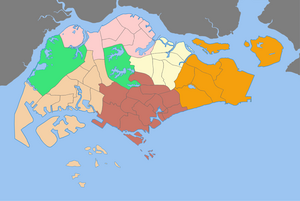
Transportation in Singapore is predominantly land-based, with a comprehensive network of roads making many parts of the city-state, including islands such as Sentosa and Jurong Island, accessible. The road network is complemented by a robust rail system consisting of the Mass Rapid Transit (MRT) and the Light Rail Transit (LRT), which cover the length and width of Singapore and serve a few neighbourhoods respectively. The main island of Singapore is also connected to other islands via ferryboat services. Furthermore, the city-state maintains strong international connections through two bridges linking it to Malaysia – the Causeway and the Second Link – and the Singapore Changi Airport, a major aviation hub in Asia.

Johor Bahru, colloquially referred to as JB, is the capital city of the state of Johor, Malaysia and the core city of Johor Bahru District, the second largest district in Malaysia by population. It is the second-largest GDP contributor among all major cities in Malaysia, and forms a part of Iskandar Malaysia, the nation's largest special economic zone by investment value. The city has a population of 858,118 people within an area of 391.25 km2.
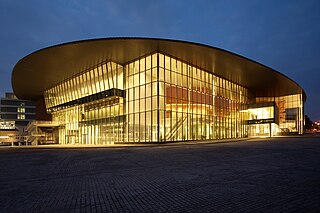
Woodlands is a planning area and residential town located in the North of Singapore. As of 2019, the town has a population of 254,733. Located approximately 25 km (16 mi) north of the central business district (CBD), it is the densest planning area and is the regional centre for the northern parts of the country.

Singapore is an island city-state and country in maritime Southeast Asia, located at the end of the Malayan Peninsula between Malaysia and Indonesia as well as the Straits of Malacca and the South China Sea. It is heavily compact and urbanised. As of 2023, Singapore has a total land area of 734.3 square kilometres (283.5 sq mi). Singapore is separated from Indonesia by the Singapore Strait and from Malaysia by the Straits of Johor.

Tampines is the regional centre of the East Region of Singapore. With a population of 265,340 living across its five subzones, it is the second-most populous planning area in Singapore, according to the DOS Population Trends 2022. It is home to approximately 5% of Singapore's population. Tampines is bordered to the west by Bedok and Paya Lebar, to the north by Pasir Ris, to the east by Changi, and to the south by the Straits of Singapore. Situated in the historical region of Tanah Merah, its present-day terrain is particularly flat due to the large-scale sand quarrying in the 1960s.
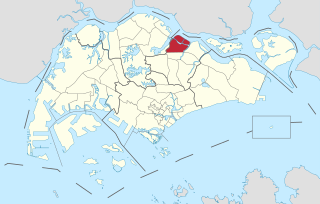
Seletar is an area located in the north-east of Singapore. Its name can also refer to the Seletar Planning Area, situated in the North-East Region of Singapore. The place name was derived from the Malay subgroup who were indigenous to the area, the Orang Seletar. It shares boundaries with the planning areas of Sengkang to the south, Punggol to the east, Yishun and Simpang to the west, as well as the Straits of Johor to the north.

The Pan Island Expressway is the oldest and longest expressway in Singapore. It is also Singapore's longest road. The expressway runs from the East Coast Parkway near Changi Airport in the east to Tuas in the west and has a total length of 42.8 kilometres (26.6 mi).
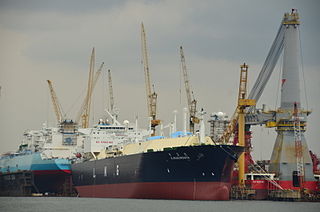
The North Region of Singapore is one of the five regions in the city-state. The region is the second largest region in terms of land area, and has a population of 582,330. Woodlands is the regional centre and also the most populous town with 255,130 residents living in the area. Comprising 13,500 hectares of land area, it includes eight planning areas.
Urban planning in Singapore is the direction of infrastructure development in Singapore. It is done through a three-tiered planning framework, consisting of a long-term plan to plot out Singapore's development over at least 50 years, a Master Plan for the medium term, and short-term plans, the first two of which are prepared by the Urban Redevelopment Authority (URA) and the last by multiple agencies.

Rail transport in Singapore mainly consists of a passenger urban rail transit system spanning the entire city-state: a rapid transit system collectively known as the Mass Rapid Transit (MRT) system operated by the two biggest public transport operators SMRT Trains and SBS Transit, as well as several Light Rail Transit (LRT) rubber-tyred automated guideway transit lines also operated by both companies. In addition, local specialised light rail lines are in operation in places such as the Singapore Changi Airport and Sentosa.

The West Region of Singapore is one of the five regions in the city-state. The region is the largest in terms of land area and is the third most populous region after the North-East Region and Central Region. Jurong East is the regional centre of the region, with plans of developing the Jurong Lake District into a second CBD area. Jurong West is the most populous town in the region, with a population of 262,730 residents. Comprising 25,500 hectares of land area, it includes twelve planning areas and is home to about 922,540 residents.

Iskandar Puteri is a city and the administrative capital of the state of Johor, Malaysia. It hosts Kota Iskandar, which represents the seat of government of the state of Johor. Situated along the Straits of Johor at the southern end of the Malay Peninsula, it is also the southernmost city in Peninsular Malaysia.

The East Region of Singapore is one of the five regions in the city-state. The region is the 2nd most densely populated among the five, and has the smallest land area. Bedok is the region's most populous town and Tampines is the regional centre of the area. Comprising 11,000 hectares, it includes six planning areas and is also home to Singapore's Changi Airport and Paya Lebar Air Base.
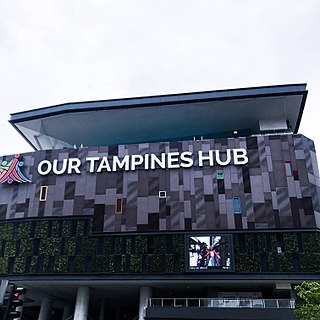
Our Tampines Hub is an integrated community and lifestyle building in Tampines, Singapore. It is located on the grounds of the former Tampines Stadium and Tampines Sports Hall and is part of the development of the Tampines Regional Centre.
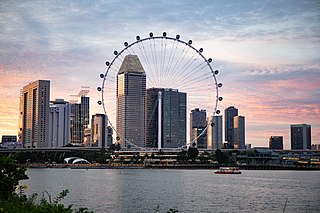
This article shows the notable future developments in Singapore. Most of them are currently under construction with most to be completed within the next five years.

Iskandar Malaysia, formerly known as Iskandar Development Region (IDR; Malay: Wilayah Pembangunan Iskandar) and South Johor Economic Region (SJER), is the main southern development corridor in Johor, Malaysia. It was established on 8 November 2006. Iskandar Malaysia, which is formed by major cities such as Johor Bahru, Iskandar Puteri and Pasir Gudang, is part of the Johor Bahru Conurbation. It also lies within the original Indonesia–Malaysia–Singapore growth triangle, along with Singapore and Riau, Indonesia.
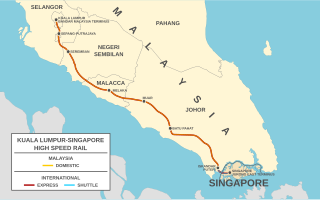
The Kuala Lumpur–Singapore high-speed rail (HSR) is a proposed railway project to link Kuala Lumpur, Malaysia to Singapore via a high-speed rail line. It was first proposed by then Malaysian Prime Minister Najib Razak in September 2010. Singapore Prime Minister Lee Hsien Loong formally agreed to the joint project in February 2013, with the HSR originally expected to be completed by 2026.

The Johor Bahru–Singapore Rapid Transit System (RTS) Link is an international cross-border rapid transit system that will connect Malaysia's second largest city, Johor Bahru and Woodlands, Singapore, crossing the Strait of Johor. It will consist of two stations, with the Malaysian terminus at Bukit Chagar station and the Singaporean terminus at Woodlands North station, which also interchanges with Singapore's Thomson–East Coast MRT line.
